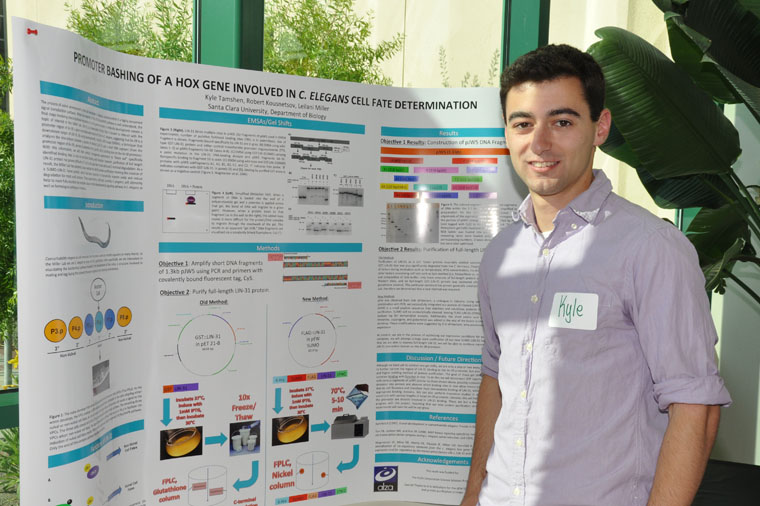
Sigma Xi: 2015 Research Poster Presentation - Promoter Bashing of a Hox Gene Involved in C. elegans Cell Fate Determination
Kyle Tamshen, Robert Kousnetsov, Amanda Dewey
Faculty Mentor: Leilani Miller
LIN-31 is a transcription factor that is known to interact with promoter region of lin-39, a gene correlated with vulval cell fates in the soil nematode C. elegans, suggesting that lin-39 is a downstream target of LIN-31. By using electrophoretic mobility shift assays (EMSAs), a technique that analyzes the interactions between a protein of interest (LIN-31) and a short DNA segment (from the promoter region of lin-39), we aim to determine the specific LIN-31 binding sites on the lin-39 promoter. With this information, we will then conduct mutagenesis experiments to "knock out" specifically identified binding sites in vivo to correlate binding with function. However, purification of full length LIN-31 protein has proven difficult in E. coli in the past due to low yield and C-terminal degradation. As a result, the Miller Lab has adopted a new method for LIN-31 protein purification involving the creation of a SUMO::LIN-31 fusion protein, which has been reportd to dramatically improve yields and reduce degradation for most small proteins. These experiments, although currently in progress, will ultimately help to more fully elucidate the complex nature of this developmental signaling pathway in C. elegans as well as homologous pathways in humans.